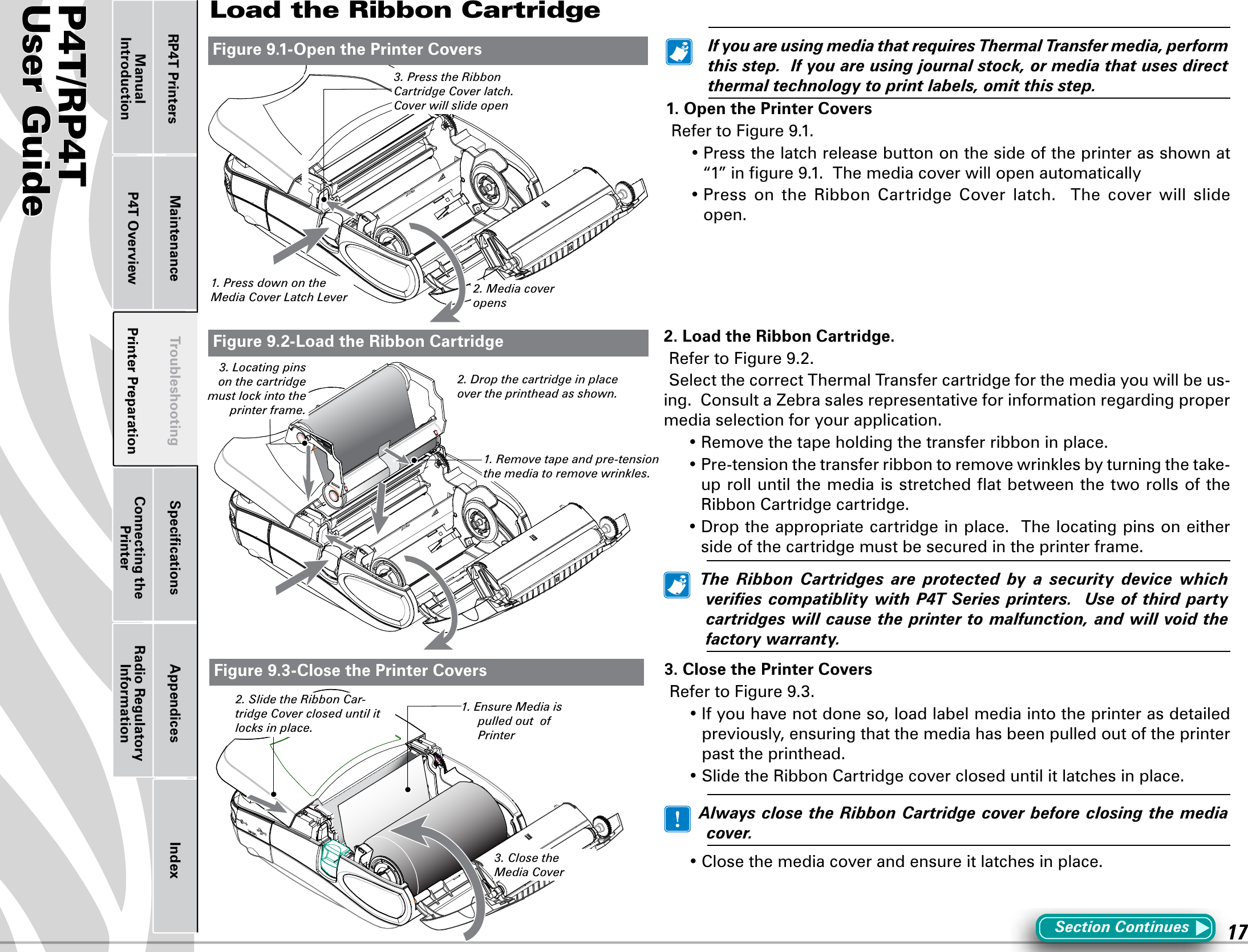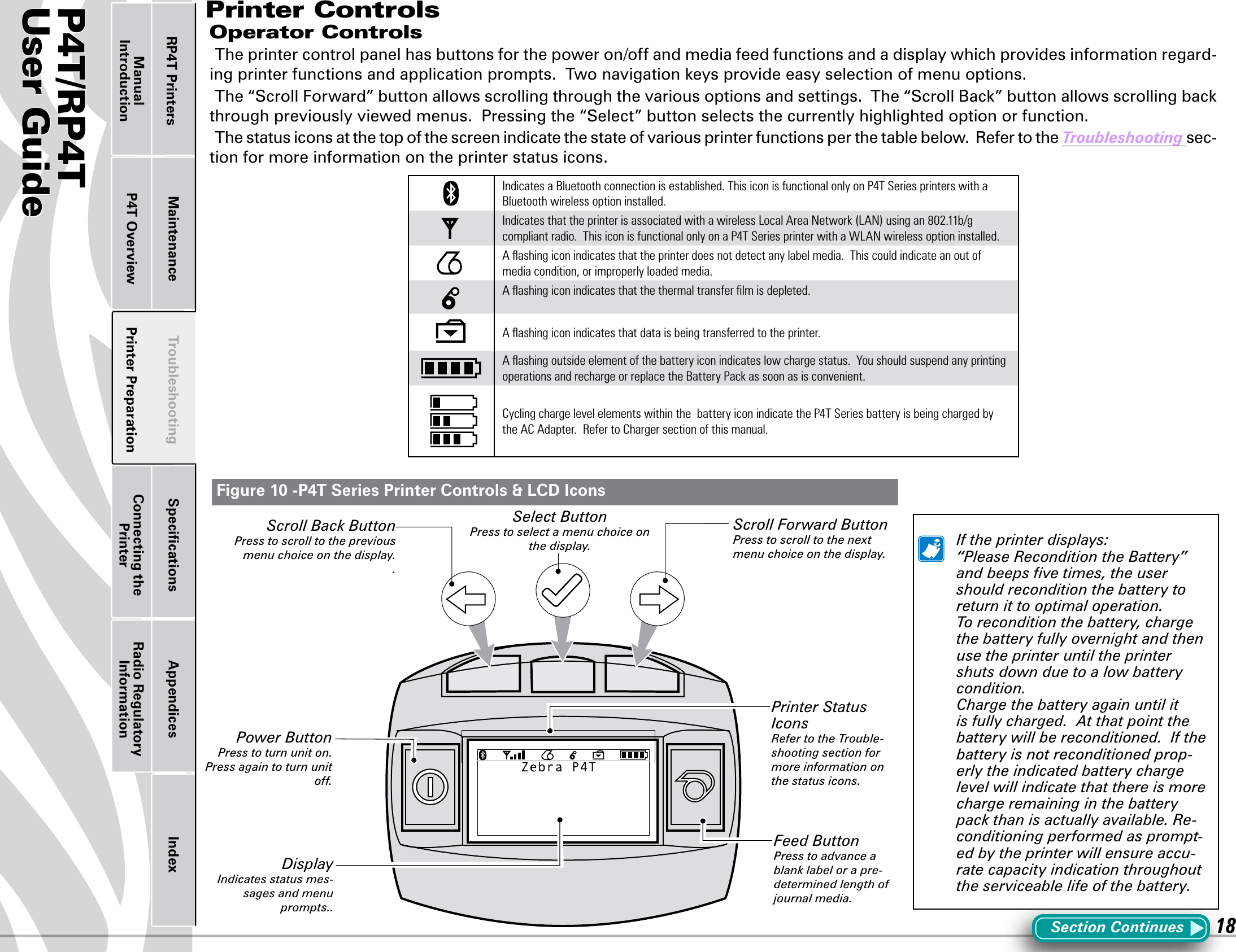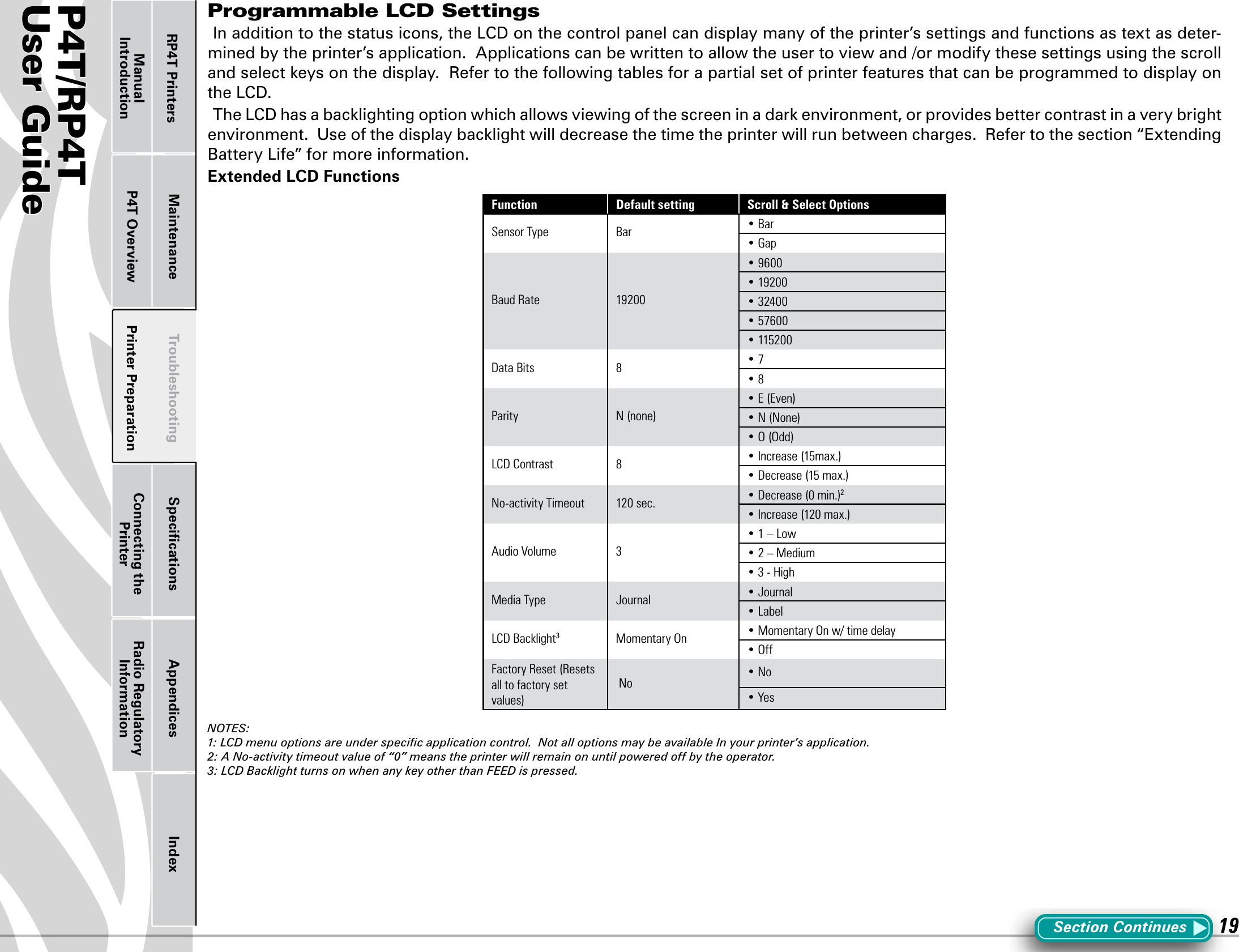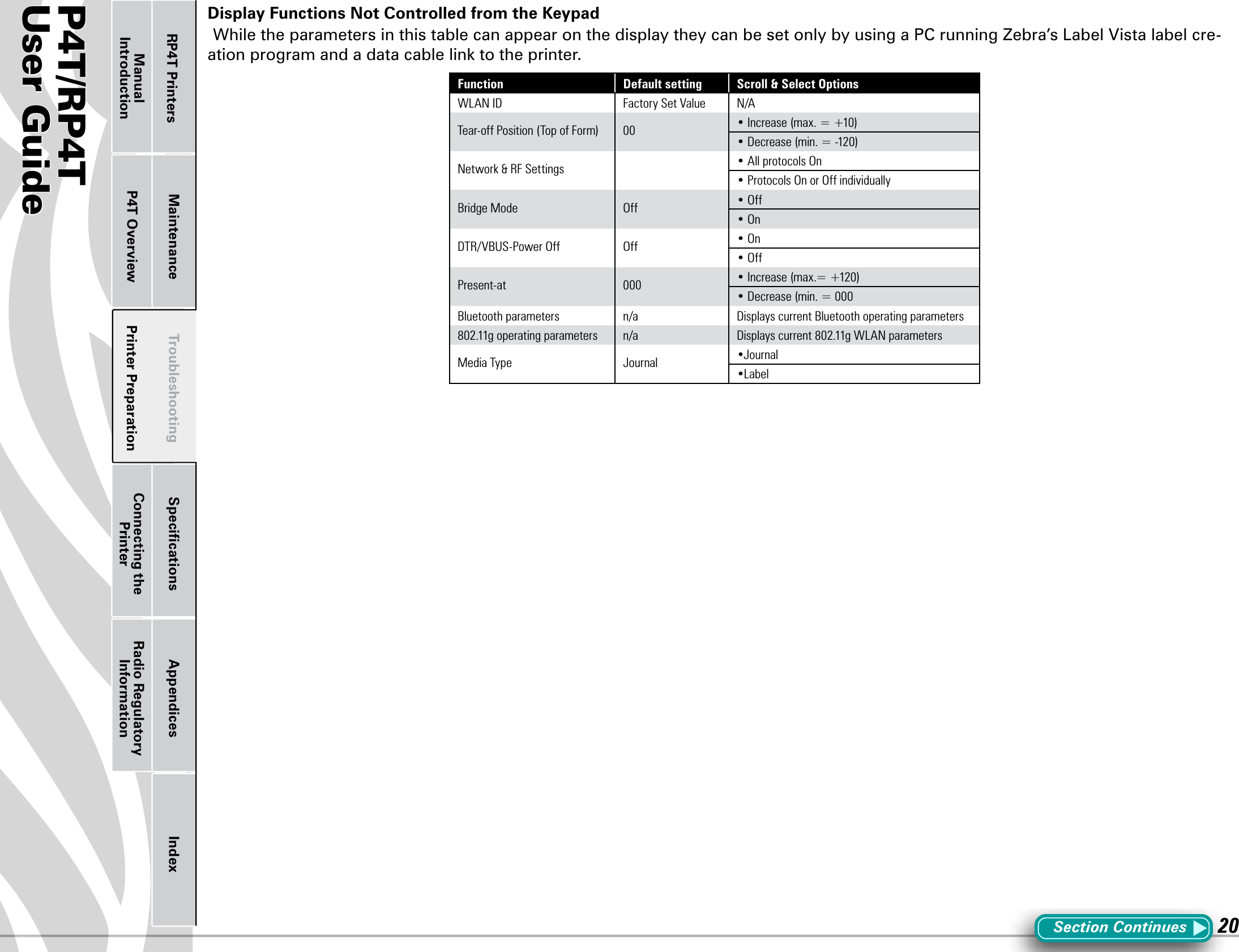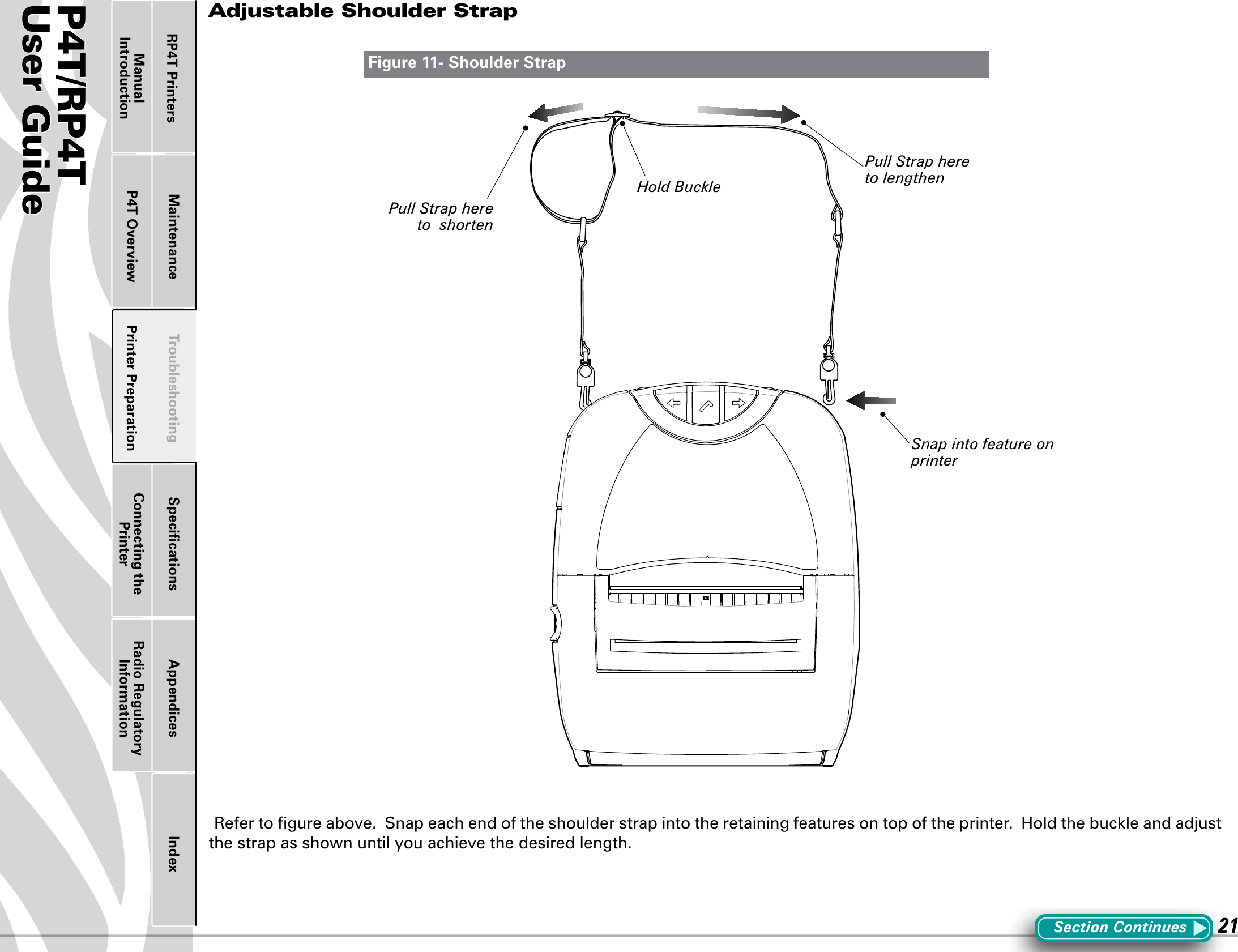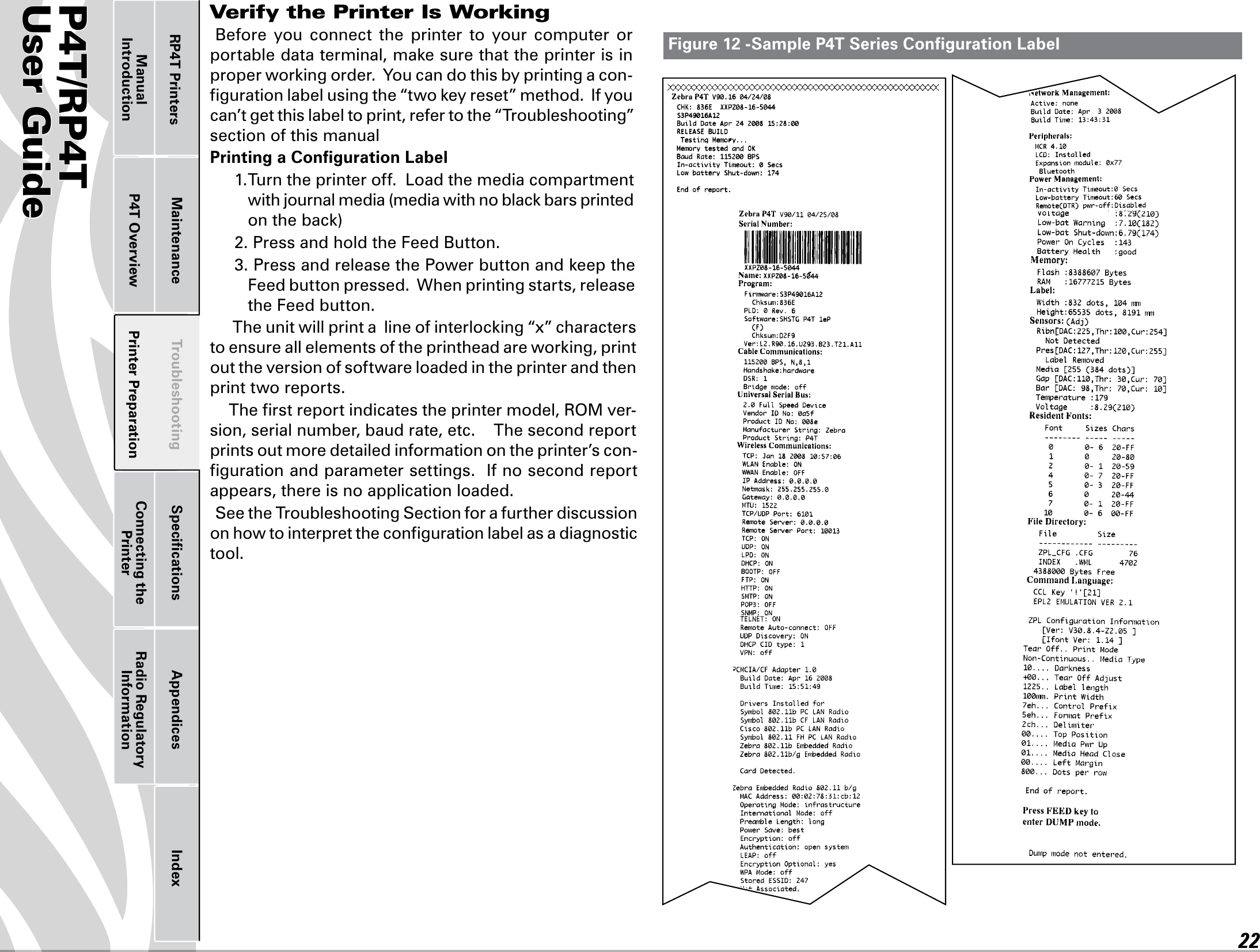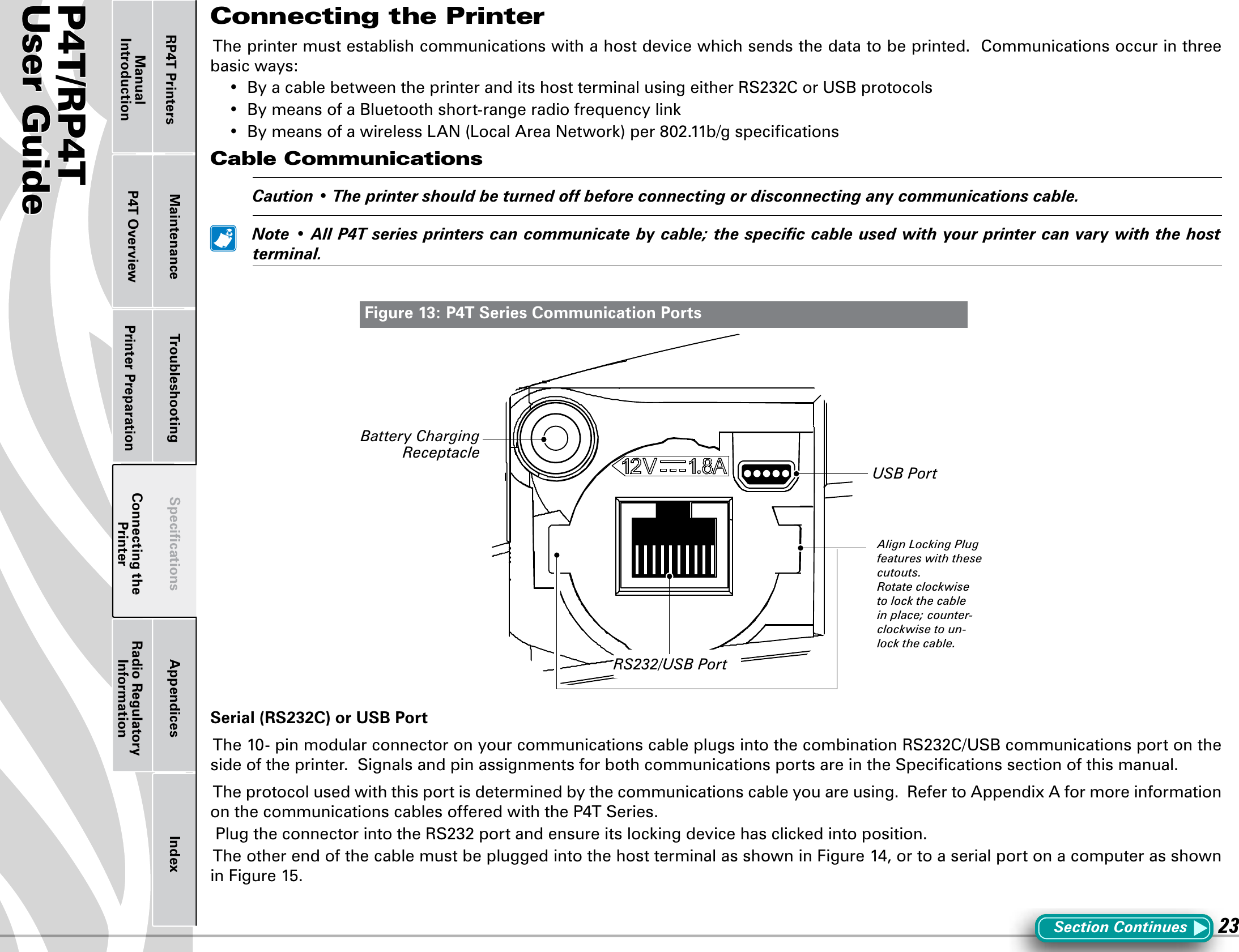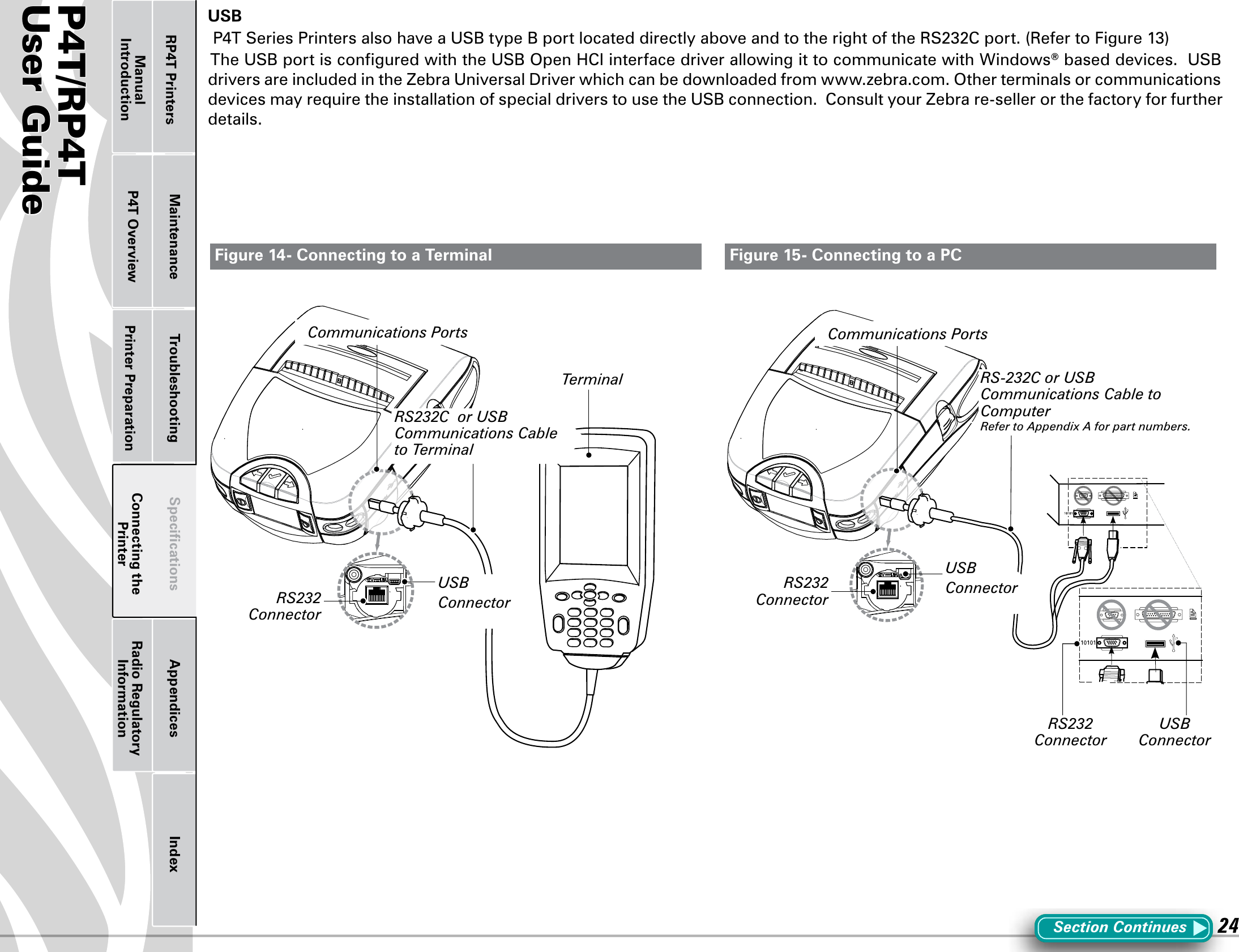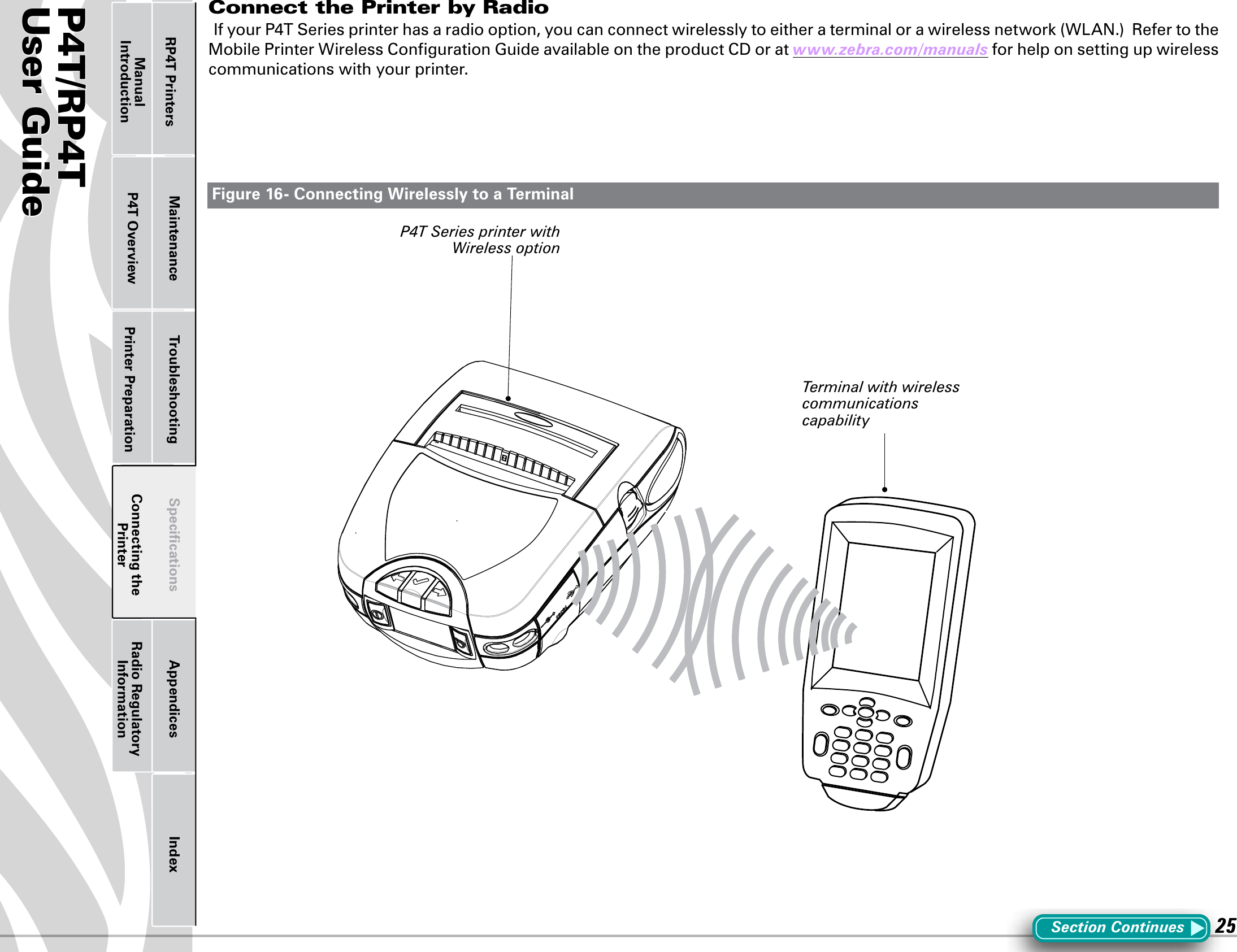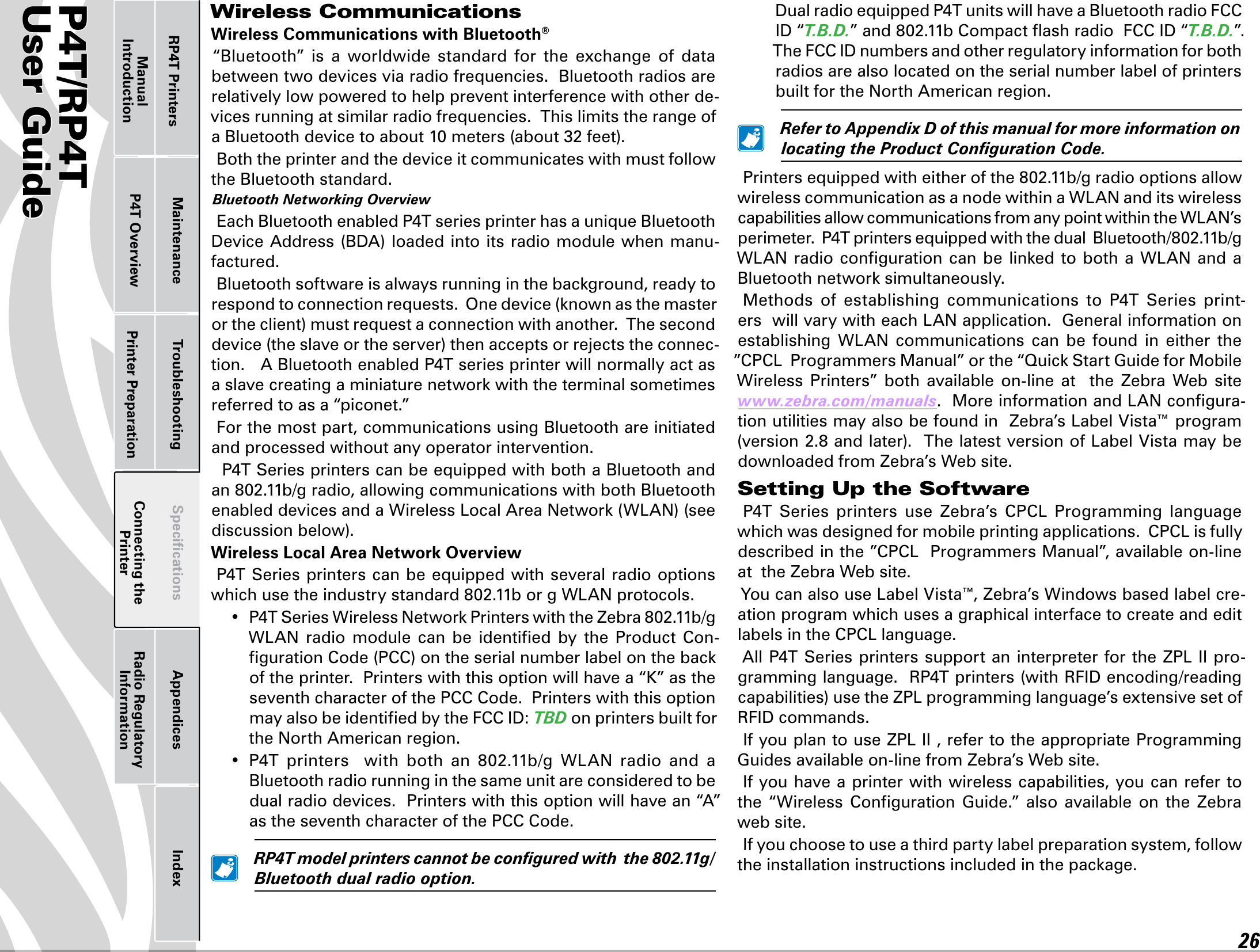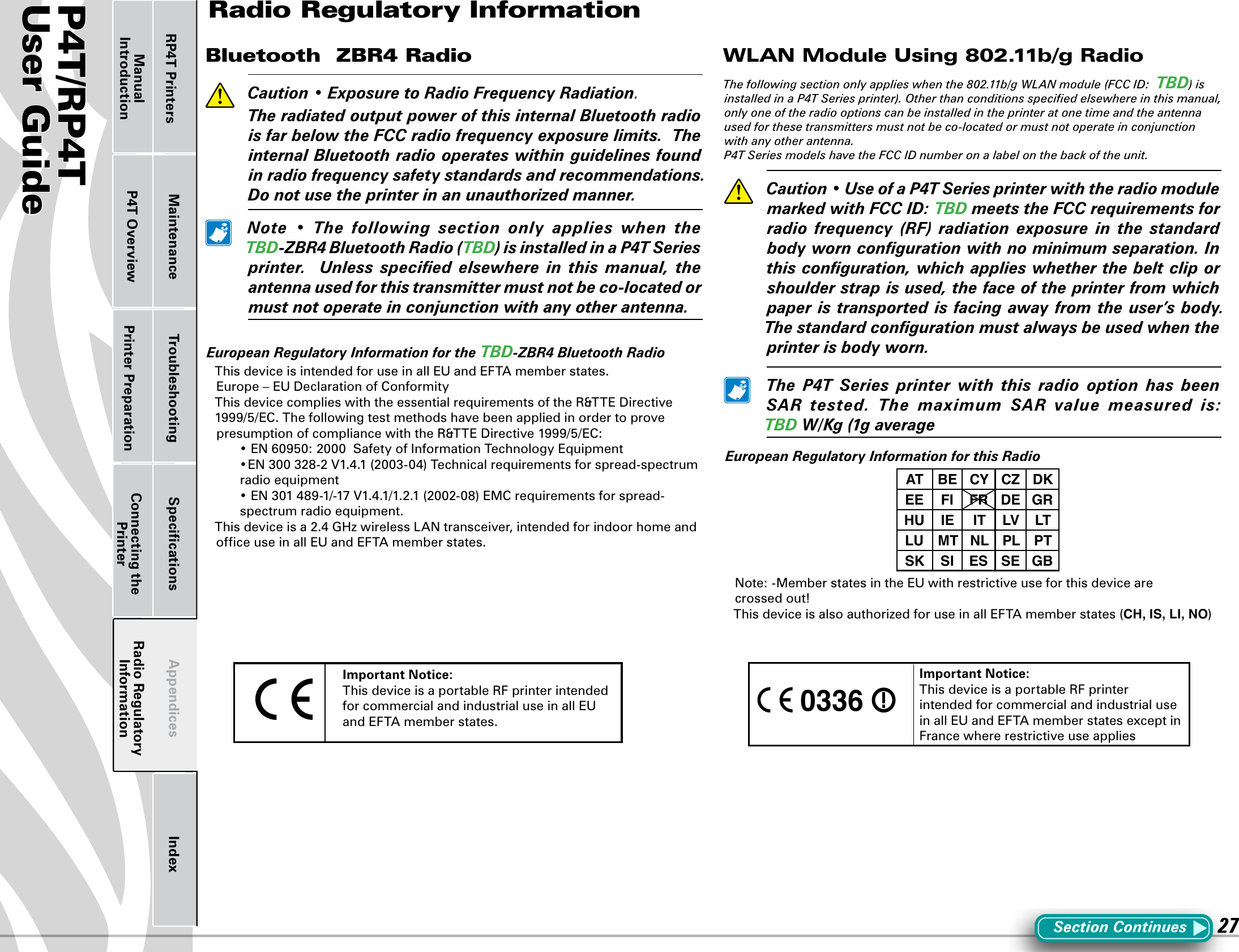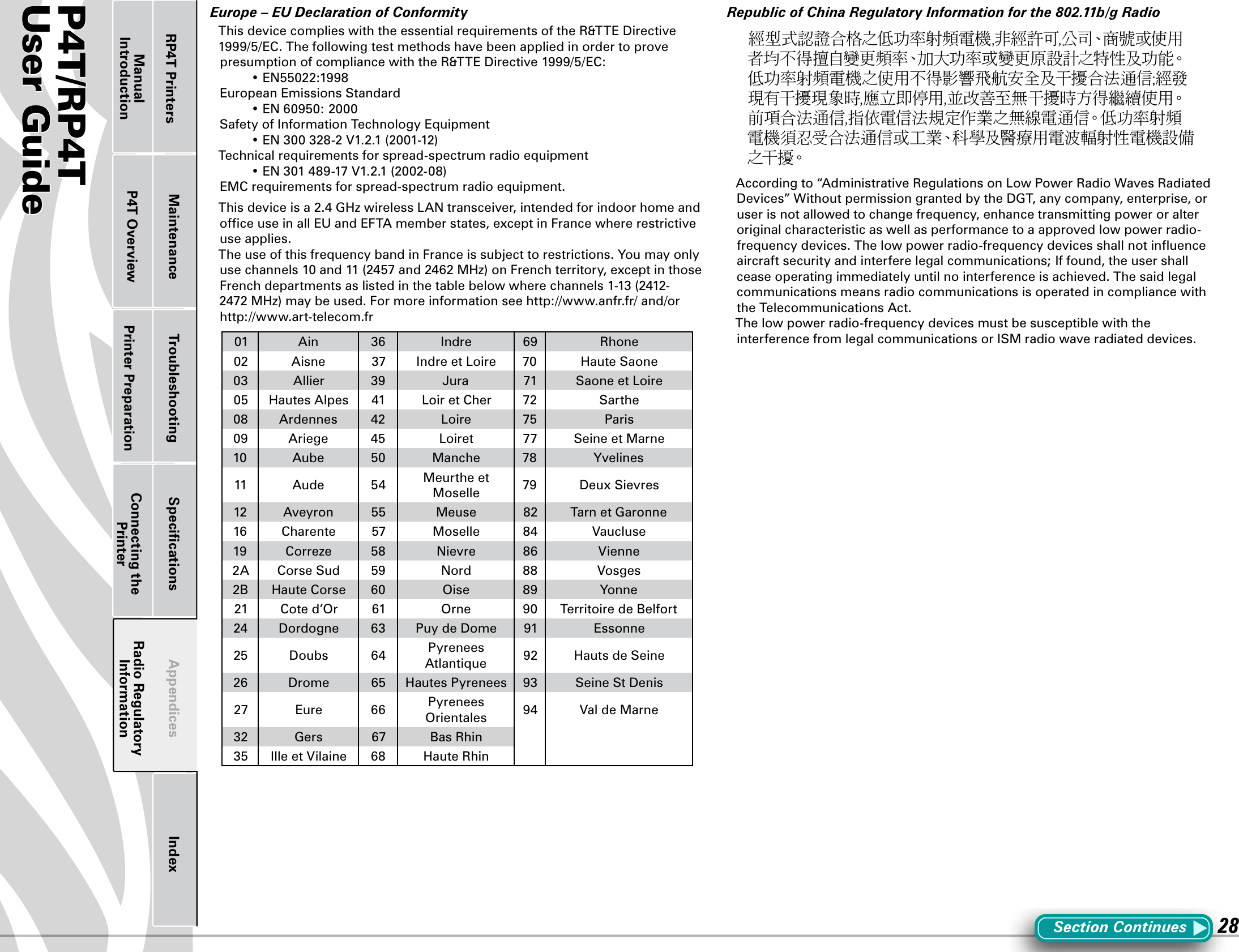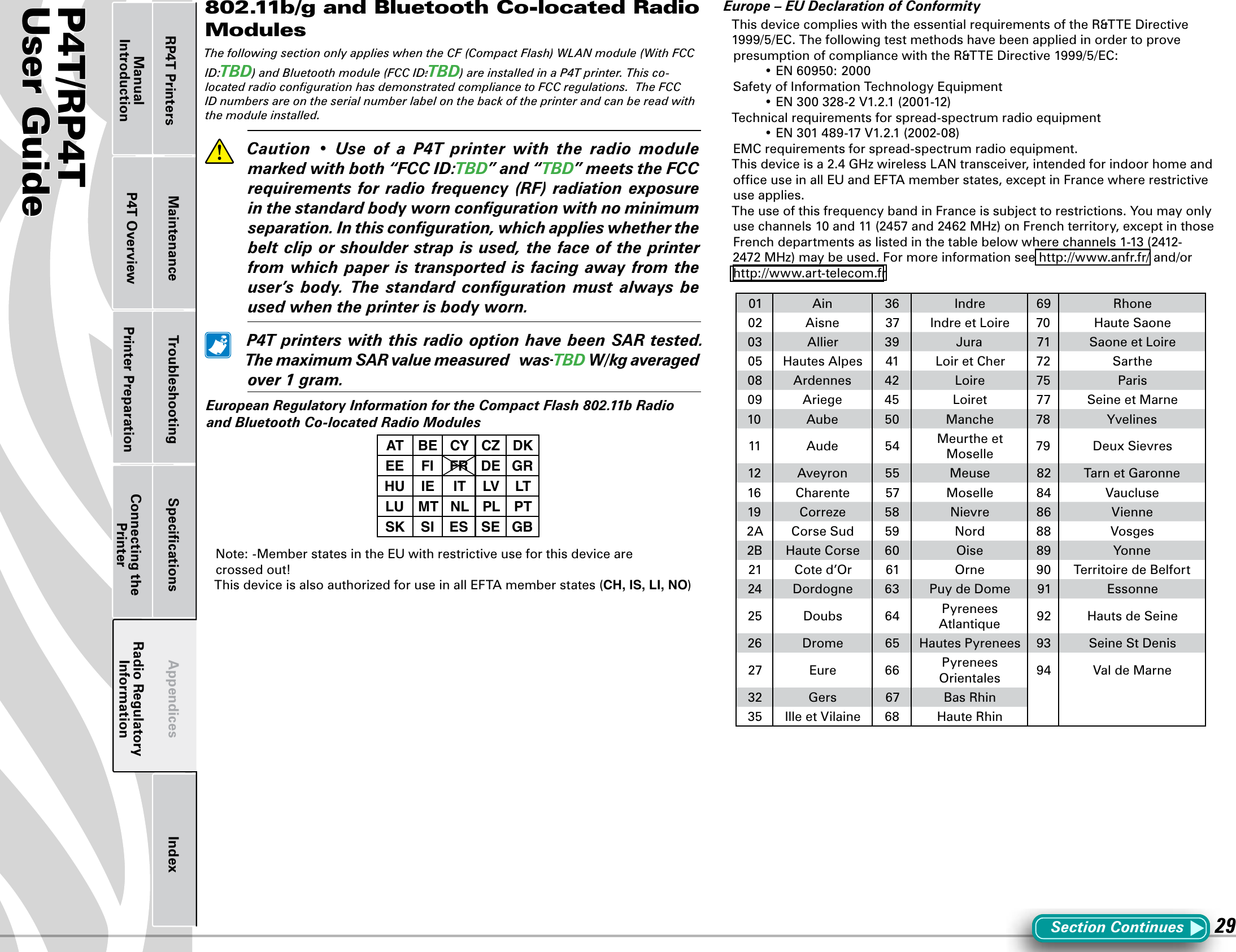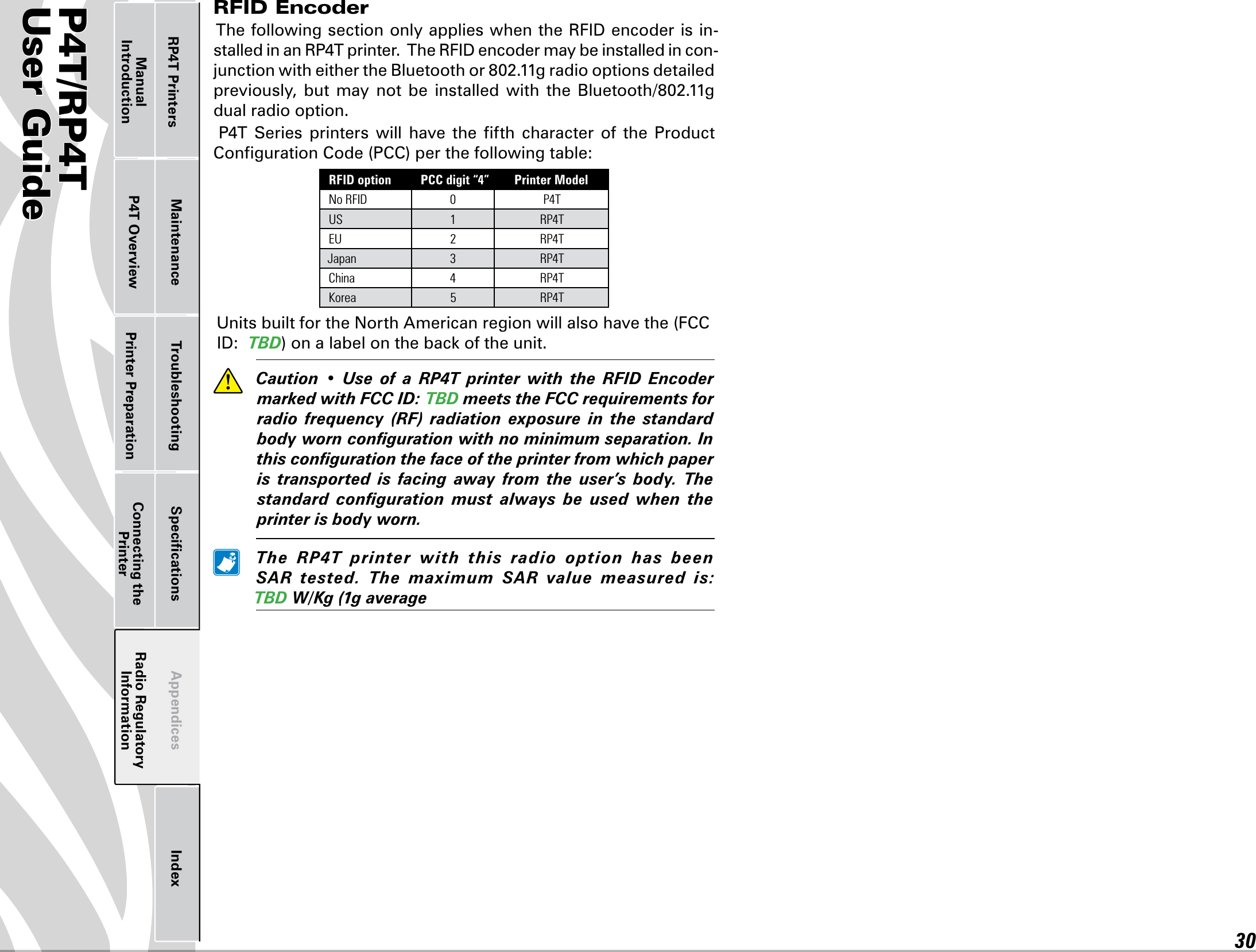Zebra Technologies PLAN11BG Zebra Printer with Embedded b/G radio User Manual UMAN P4TB3
Zebra Technologies Corporation Zebra Printer with Embedded b/G radio UMAN P4TB3
Contents
- 1. Users Manual Part 1 of 4
- 2. Users Manual Part 2 of 4
- 3. Users Manual Part 3 of 4
- 4. Users Manual Part 4 of 4
Users Manual Part 2 of 4
![P4T/RP4TUser Guide 16Printer Preparation Connecting the PrinterRadio Regulatory InformationRP4T Printers Maintenance Troubleshooting Specifications Appendices IndexP4T OverviewManual IntroductionAdjusting The Media Support DisksMedia Core SizeMediasuppliedfortheP4TSe-ries printers will have two pos-sible core sizes, depending on the media type. Journal media and most label media is supplied witha0.75”[19.1mm]diametercore to maximize the amount of media contained on a roll.P4Tprintermediasupportsaresetatthefactoryfor0.75”diam-eter media cores.RP4T printers (equipped withtheRFIDencoder)areconguredformediawith1.38”[35.05mm]diametercoressinceRFIDme-dia cannot be wound around a small diameter core without both degrading its ability to feed properly past the printhead and causing possible damage to the embeddedRFIDcircuitry.Changing The Media Support Core Diameter SizeIt may become necessary to change the media core size in the field to allow use of different media. The media support disks aredesigned for both sizes of media cores, and they can be adjusted by removing them, flipping their position and re-securing them to the printer. 1. Open the Media Cover andremove any label media.2.UsePhillipsheadscrewdriverwith a long blade to keep thescrewattachingtheSupportDiskto the printer from turning.3.RotatetheSupportDiskwhilekeeping the attachment screwfrom turning, and remove it.4. Flip the Media Support Diskso that the desired core diameter ridge faces towards the inside of theprinter.PleaserefertoFigure8.5.Re-securetheSupportDiskbytighten-ingitontotheattachingscrew.DonotovertightentheSupportDisk.Itmustbeabletospinfreely.RepeatthisprocedureontheotherSupportDisk. AlwaysensurethatbothSupportDisksareadjustedforthesamesizemediacore. ReplacetheMediaSuppor tDisksiftheyhavebeenadjustedfordifferentcoresizesmorethan5(ve)times.Figure 8- Adjusting the Media Core DiameterSection ContinuesMedia Support Disk (shown adjusted for 1 3/8” label media core)Media Support Disk (shown re-adjusted for 3/4” label media core)Remove Support Disk, and flip it 180° to change core size.](https://usermanual.wiki/Zebra-Technologies/PLAN11BG.Users-Manual-Part-2-of-4/User-Guide-992815-Page-1.png)
